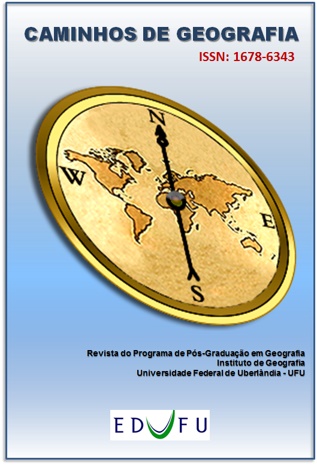VULNERABILITY ANALYSIS OF UNDERGROUND AQUIFERS TO CONTAMINATION USING THE DRASTIC METHOD AND RISK DETERMINATION
DOI:
https://doi.org/10.14393/RCG228457049Palabras clave:
Land use and occupation, Risk of contamination, Groundwater, DRASTICResumen
Groundwater represents an important component in the supply of freshwater in several regions around the world. The contamination of these waters is a worrisome problem in the management of water resources. Since underground aquifers are vulnerable to contamination by human and industrial activities, including land use, the diagnosis associated with land use is critical for environmental management. The present study was carried out in the Uberaba sandstone formation, in which the vulnerability of the subterranean aquifers was determined using the DRASTIC method, by evaluating the interaction between the use and occupation of the land using a geographic information system. Thus, the risk of contamination of the underground aquifer was determined by evaluating the land use with the water quality and fertility. The tool applied in the present study proved effective for the diagnosis, management and action planning in the short and long term, with the intention of preserving these natural resources.
Descargas
Descargas
Publicado
Número
Sección
Licencia
Derechos de autor 2021 Berenice de Paula Amaral , Renato Farias do Valle junior, Emerson Ribeiro Machado , Hygor Evangelista Siqueira

Esta obra está bajo una licencia internacional Creative Commons Atribución-NoComercial-SinDerivadas 4.0.
Los autores que publican en esta Revista aceptan los siguientes términos: a) Autores conserva los derechos de autor y otorga a la revista el derecho de primera publicación, con el trabajo bajo licencia Creative Commons Attribution-NonCommercial NoDerivs 4.0 International. b) Se permite y anima a los autores a publicar y distribuya su trabajo en línea (por ejemplo, en repositorios institucionales o en su sitio web personal), ya que esto puede generar cambios productivos, así como incrementar el impacto y cita de trabajo publicado. c) Por el hecho de aparecer en este diario de acceso público, los artículos son de libre uso, con sus propias atribuciones, en aplicaciones educativos y no comerciales.










